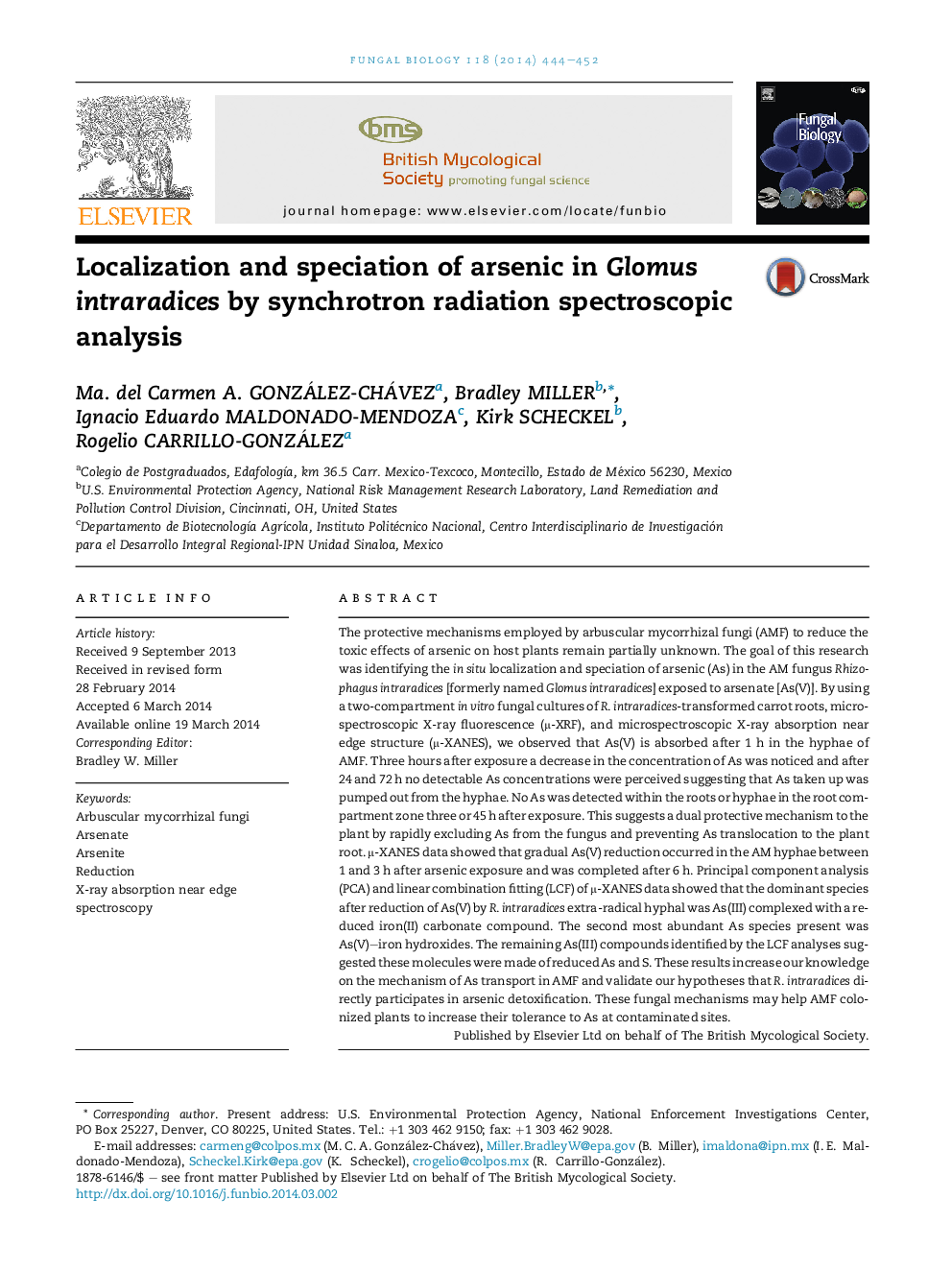| Article ID | Journal | Published Year | Pages | File Type |
|---|---|---|---|---|
| 4357022 | Fungal Biology | 2014 | 9 Pages |
•Glomus intraradices was incubated in two-compartment dishes with a hyphal only zone.•Extra-radical G. intraradices hyphae were exposed to arsenate over 72 h.•X-ray absorption spectroscopy verified in vivo reduction of arsenate by hyphae.•Reduction by G. intraradices may protect host plants in arsenic-contaminated soils.
The protective mechanisms employed by arbuscular mycorrhizal fungi (AMF) to reduce the toxic effects of arsenic on host plants remain partially unknown. The goal of this research was identifying the in situ localization and speciation of arsenic (As) in the AM fungus Rhizophagus intraradices [formerly named Glomus intraradices] exposed to arsenate [As(V)]. By using a two-compartment in vitro fungal cultures of R. intraradices-transformed carrot roots, microspectroscopic X-ray fluorescence (μ-XRF), and microspectroscopic X-ray absorption near edge structure (μ-XANES), we observed that As(V) is absorbed after 1 h in the hyphae of AMF. Three hours after exposure a decrease in the concentration of As was noticed and after 24 and 72 h no detectable As concentrations were perceived suggesting that As taken up was pumped out from the hyphae. No As was detected within the roots or hyphae in the root compartment zone three or 45 h after exposure. This suggests a dual protective mechanism to the plant by rapidly excluding As from the fungus and preventing As translocation to the plant root. μ-XANES data showed that gradual As(V) reduction occurred in the AM hyphae between 1 and 3 h after arsenic exposure and was completed after 6 h. Principal component analysis (PCA) and linear combination fitting (LCF) of μ-XANES data showed that the dominant species after reduction of As(V) by R. intraradices extra-radical hyphal was As(III) complexed with a reduced iron(II) carbonate compound. The second most abundant As species present was As(V)–iron hydroxides. The remaining As(III) compounds identified by the LCF analyses suggested these molecules were made of reduced As and S. These results increase our knowledge on the mechanism of As transport in AMF and validate our hypotheses that R. intraradices directly participates in arsenic detoxification. These fungal mechanisms may help AMF colonized plants to increase their tolerance to As at contaminated sites.
